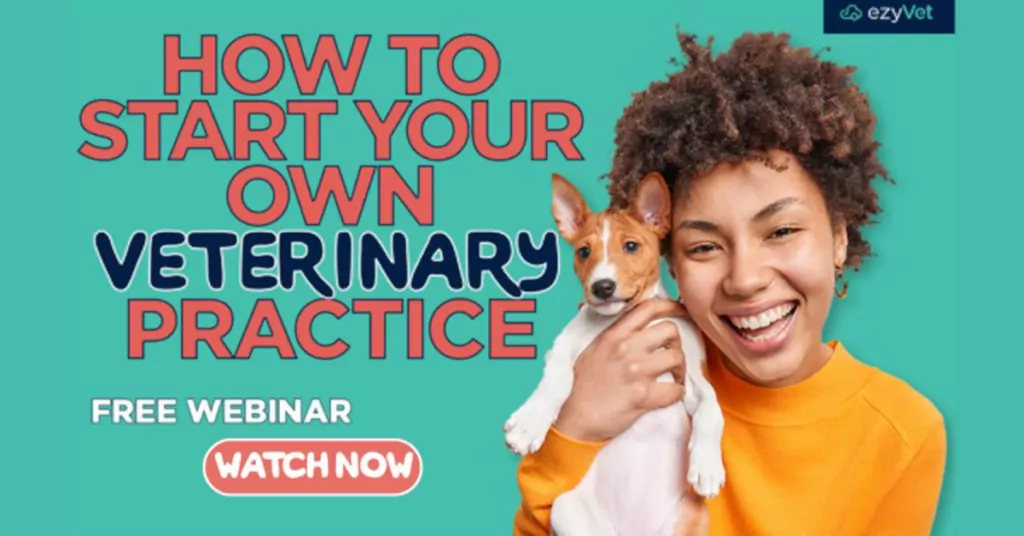From a client’s perspective, the veterinary industry is fairly homogeneous. In other words, the products and services that a pet owner finds at one small animal GP are probably going to be quite similar to the products and services they find at another small animal GP.

So, what can you do to help your practice stand out from the crowd? You market it.
Like it or not, marketing is an integral part of running a successful veterinary practice. An effective marketing strategy plays a critical role in attracting new clients, building a solid brand, and strengthening your customer relationships – all of which can differentiate your practice from the competition.
Here are some actionable tips you can use to build an effective marketing strategy.
Creating Your Marketing Plan
Ensure your marketing efforts align with your business goals by sitting down and putting together a marketing plan.
A marketing plan is simply a document that defines your marketing objectives, along with the actionable steps you’ll take to achieve them. It provides an overview of your goals, target market, resources, and the marketing channels likely to yield the best results for your business.
Here are a few considerations to include in your marketing plan:
- Objective: What is it you want to achieve? More clients? More Google reviews? Increased revenue? Whatever your objective, ensure your goals are SMART: Specific, Measurable, Achievable, Relevant, and Timely.
- Target audience: Defining your audience helps you get a better understanding of your prospective clients and the type of marketing content that will resonate with them. Look through your records to find basic demographic information about your clients and use the information to map out their needs, wants, and pain points.
- Competitors: Research the local competition by analyzing their websites, social media pages, and promotional materials. Who are they targeting? What are they doing right? Where could they improve? Understanding your competitors can help you identify gaps in the market that your business might capitalize on.
- Marketing channels: The mix of marketing channels you’ll use depends on your goals, target audience, and the size of your business. Digital channels include social media marketing, blog content, email outreach, and paid search advertising, while traditional channels include radio, TV, magazines, newspapers, trade shows, and word of mouth.
Once you have a firm grasp on what you want to achieve with your marketing, it’s time to formulate an action plan. Outline step-by-step instructions, including timeframes and deadlines, the channels you will use, who’s responsible for executing each task, associated costs, and KPIs.
Developing a Veterinary Brand
Your brand is your story. It’s how your audience distinguishes your veterinary clinic from the myriad of other veterinary clinics in your area. Branding is an opportunity to shape your audience’s perception of your business, which can help you attract the right clients.
What makes your clinic different? Why should clients come to you? Is it your level of expertise? Your unparalleled customer service? Your state-of-the-art equipment, team culture, or reputation in the community?
Whatever it is that makes you you, write it down and start thinking about how you can weave it into your brand, along with all the other elements that make up your story – things like your history, values, and motivations.
People respond to brands whose values reflect their own, and the more authentic your story, the more likely you’ll develop a strong connection with your audience.
Your brand should be reflected across all of your client touchpoints, including:
- Website.
- Logo.
- Slogan.
- Signage.
- Social media.
- Email.
- In-person communications.
- Event banners.
- Business cards.
- Any other branded promo products.

Harnessing the Power of Google Ads
There’s not much point in investing in an amazing website if you don’t have any web traffic.
That’s where Google Ads come in. Google Ads is Google’s advertising platform.
It allows you to display various ad types (including text ads, display ads, video ads, and shopping ads) on Google’s search engine and other partner websites. These ads appear at the top or bottom of the search engine results page when someone searches for specific keywords related to your products or services.
Google Ads operates on a pay-per-click (PPC) model, meaning you only pay when someone clicks on your ad. However, in order to get the best ROI, you’ll need to think carefully about the keywords you use in your ads.
- Think like your customers: What would your clients type into Google if they were looking for your business?
- Do the research: There are many tools you can use to get insight into your clients’ search habits, such as Google Trends, AnswerThePublic, Ubersuggest, etc.
- Be specific: Specific keyword phrases tend to deliver better ROI than general keywords. For example, the keyword phrase “emergency vet in Columbus” will probably cost significantly less per click and attract much higher intent traffic than a more general keyword phrase like “vet clinic.”
- Get creative: The best keywords in the world won’t generate meaningful traffic if your ads aren’t up to scratch. For best results, keep your ads short and sweet, highlight what makes you unique, and always include a clear call to action.
Capturing More Google Reviews
Google Reviews are a considerable influence on client relationships and customer acquisition. A healthy collection of positive reviews is critical for building trust, making an excellent first impression, and communicating important information about your business to prospective clients.
Here are a few essential tips for growing your Google reviews.
- Just ask: Ask your clients how they felt about their appointment. If they were happy with the service they received, ask them to write a quick Google review.
- Send a link: Invite your clients to leave a review by sending them a link to a review request via text or email. Cloud-based practice management software can help facilitate or even automate this process!
- Respond: If a client leaves a review, take the time to respond. Use it as an opportunity to engage with your clients and show your appreciation for the feedback, regardless of whether it’s positive or negative.

Building a Powerful Social Media Strategy
Social media is one of the best ways to connect with your clients and reach new audiences. There are a bunch of platforms to choose from these days, but we’d recommend keeping it simple and sticking with Facebook and Instagram. TikTok can be a good option if you’re passionate about videos and can keep up with the ever-changing content trends.
You’ll also need to consider who will be responsible for executing your social media strategy. Outsourcing to an external agency can yield good results, or you might want to keep it in-house and spread social media management responsibilities among staff who are interested in contributing.
Below are some good tips for getting the most out of social media:
- Set goals: Before posting content, consider what you want to achieve and how it fits into your marketing objectives. Set specific and measurable goals, consider which metrics you want to track, and review the numbers regularly to ensure the plan is working.
- Add value: Social media is more about building strong client relationships than it is about self-promotion. Be engaging. All content you post should be valuable to your audience, whether informative, educational, entertaining, etc.
- Be consistent: All the content you share on social media should be on brand and consistent.
- Post frequently: Keep your audience engaged and your business front of mind by posting regularly. Aim to post about 3-5 times per week.
- Be engaging: Be authentic and engage with anyone who comments, likes, or shares your content!

Conclusion
Effective marketing doesn’t happen by accident. Think about how you want to define success and break it down into goals and the actionable steps you’ll need to hit those goals.
For more information on developing a powerful veterinary marketing strategy, check out this free comprehensive guide.
